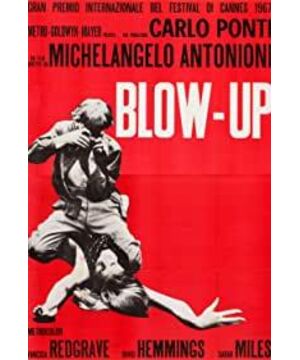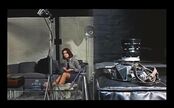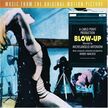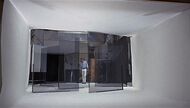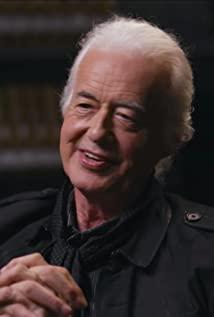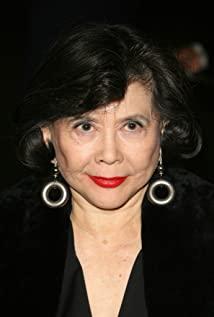—— Antonioni
"Magnification" is like a modernist novel, without a fascinating plot, but with exquisite expression skills and sufficient depth of thought.
As the director said: the film "expresses the connection between a single character and reality. Reality and events exist closely around the character." The director here is obviously no longer obsessed with recording reality. Turn to a more ultimate discussion: What is reality? In fact, at this time the wave of neo-realism in Italy has begun to ebb, and Antonioni himself has turned to another level of thinking about reality. The director has already explained: The most important thing in the film is people-people who are in reality but eventually go to nothingness.
So what is worth paying attention to in "Zoom" is the person, not the plot. In fact, the plot of the film has been artificially weakened by the director, and the narrative clues are not concentrated enough, and it can even be said to be fragmented. Too many characters unrelated to the plot appear from time to time, disturbing the viewer's attention to the plot. We can fully imagine how different "Zoom" would be if Hitchcock, the master of suspense, had hands on it. If you must tell the plot of the film, you can simply state it like this: Young photographer Thomas secretly took a group of photos of a pair of lovers in a park in London, and was discovered by the person involved. The woman in the photo followed, desperately trying to get back the photo and film. This aroused Thomas's suspicion. He kept zooming in on those photos, and found a dead body and a person with a gun in those photos. He firmly believed that this was evidence of a murder case, and wanted to expose the murder based on these photos, but in the end he found nothing, instead he fell into a confusion of survival.
This reminds me of the Frenchman Sartre’s so-called existential thinking. Leaving aside the difference in recording methods, from the book title and the main point of view, his work "Existence and Nothingness" is more like a reference to the movie "Zoom". Philosophical footnote. "Human is a self-made existence. The present is a negation linking the past and the future. It is actually nothingness." Existentialist philosophers believe that existence is accidental and absurd. People live in an isolated and helpless world, and they are "thrown" into the world. Life is a tragedy. "Zoom In" expresses the questioning and exploration of reality with one lens after another, and finally completely confused.
We have no way of knowing the relationship between the photographer’s female neighbor and the photographer, but the key to the interpretation of the entire film lies in her hand. When Thomas used tools-the intermediary between the individual and reality to enlarge the photos continuously. The final truth-the picture that was not taken away, looked like an oil painting by Van Gogh to the female neighbor. "Oil painting" is undoubtedly a symbol of nothingness, just like the tennis ball that does not exist at the end of the film. The truth that Thomas is busy exploring all day is actually nothingness. Perhaps the reality as art is far more intimate and lovely than the reality of reality. Just as a picture taken as an oil painting is far more lovely than a picture taken as a real copy, a propeller as an antique may be far more cherished than a propeller as a flying tool of an airplane.
With the development of technology, and the continuous favorable or unfavorable changes of technology to the real world, Westerners quickly divided into two camps: technological determinism and its opponents. While showing infinite enthusiasm and longing for technology, a large number of artists and intellectuals are also increasingly panic about technology. Antonioni is one of them. Ann's first color film "Red Desert" is a film on this theme. Speaking of this, it is interesting that Antonioni showed great excitement about digital technology in his later period, and repeatedly mentioned how amazing the technological progress is in that famous conversation with Bergman. This may reflect people’s general and complex views on technological progress.
In the film "Zoom", the director also unobtrusively expressed his distrust of technology and tools. The camera, as the most important invention of that century, allowed people to record occurrences almost indiscriminately-but never recorded the truth. . The photos can be taken away, and Thomas’ words can’t be believed by anyone. Even the male corpse in the park can be missing. Photographer Thomas, who appeared as an excellent user of advanced technology and tools, can do whatever he wants in his studio like a king. And hope to use tools-camera, film, visible water, magnifying glass, etc. to trace the truth, but in the end what is obtained is nothingness. Perhaps the existence of nothingness is a truth in itself.
The most symbolic characters in the film are a group of people appearing at the beginning and the end, these people are painted with white faces. I understand them as indifferent people. These people are independent of other people who don't have facial makeup in the film, and they use all kinds of performance art to fable the world. The director uses them as highly abstract silent language to tell you what he wants to express. And the most symbolic thing in the film should be the last tennis scene. A group of people with painted faces, a symbol of indiscriminate enthusiasm for games, started a nihilistic tennis match. And this is more like a performance art. The participants were engrossed, as if this was the most serious thing in the world. The ball was shot out of the boundary from time to time. When the protagonist Thomas was asked to join-picking up the ball of nothingness, he thought for a while, and then gave up the camera in his hand. Like a player who gave up his racket, he threw the ball into the air with a serious face. In a long close-up shot, Thomas' eyes began to follow the trajectory of the air ball like everyone else. And whether it exists or not seems to be an eternal problem.
There is also a broken guitar that is highly symbolic and metaphorical. Thomas had no intention of breaking into a rock concert, and the audience seemed to be hypnotized collectively dull, which made people doubt whether they really appreciate rock and roll. A smashed guitar was thrown at the crowd, and it suddenly caused everyone to rush. Thomas also desperately seized the guitar like he was hypnotized. This seems to tell us how ridiculous human pragmatism is. That is, indifference to the real and crucial imaginary art, and excessive fanatical enthusiasm for the actual material that has been broken. And once you leave a specific place, the broken guitar is no longer important. It was thrown on the corner like garbage. This seems to further tell us that even the actual things are no longer important. So what is important? who knows. Similar to this is the slogan of the anti-war parade, the phrase "I'm in paris" by a drug addict.
In addition, the attitude towards women shown in the film is also worth discussing. Feminists who watched this film are likely to scold our Master An, and a female friend who watched the film with me even expressed that she was out of anger. Indeed, none of the female characters in the film are more glorious. It feels like no brain, depravity, and failure. The poorly-shaped people were slammed by photographers like puppets. The female owner of the antique shop was also in despair. The two girls who wanted to take pictures only wanted to be beautiful but let the photographers use them as playthings, women in the park and other men. Cheating, let alone the degenerate drug addict. Why does Master Ann portray the female characters in a movie like this? I think there may be other reasons besides expressing the photographer's control in his studio. As for what the reason is, I can only ask Antonio on the cloud. Ni himself, maybe he is continuing the protracted discussion with Bergman.
View more about Blow-Up reviews


